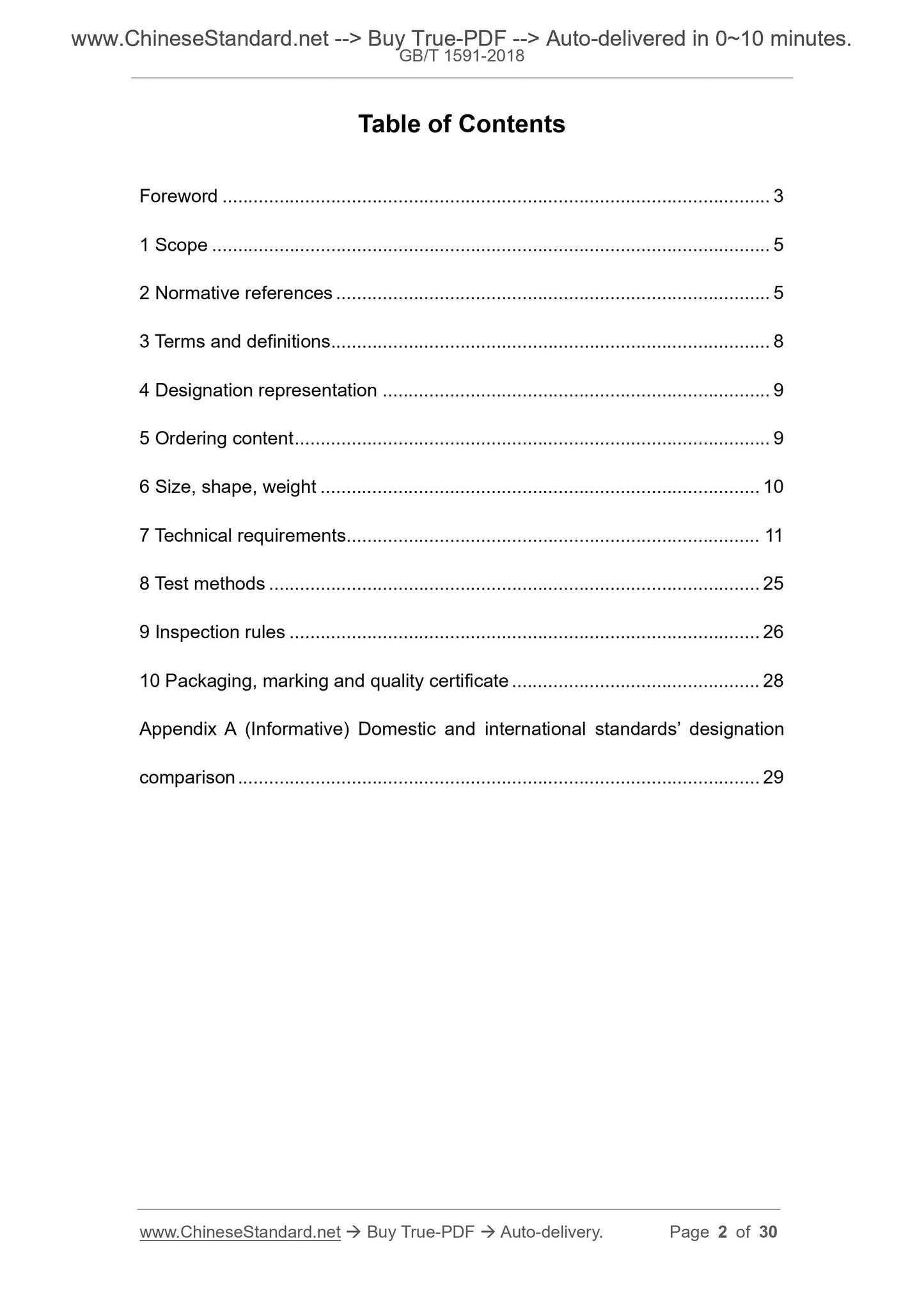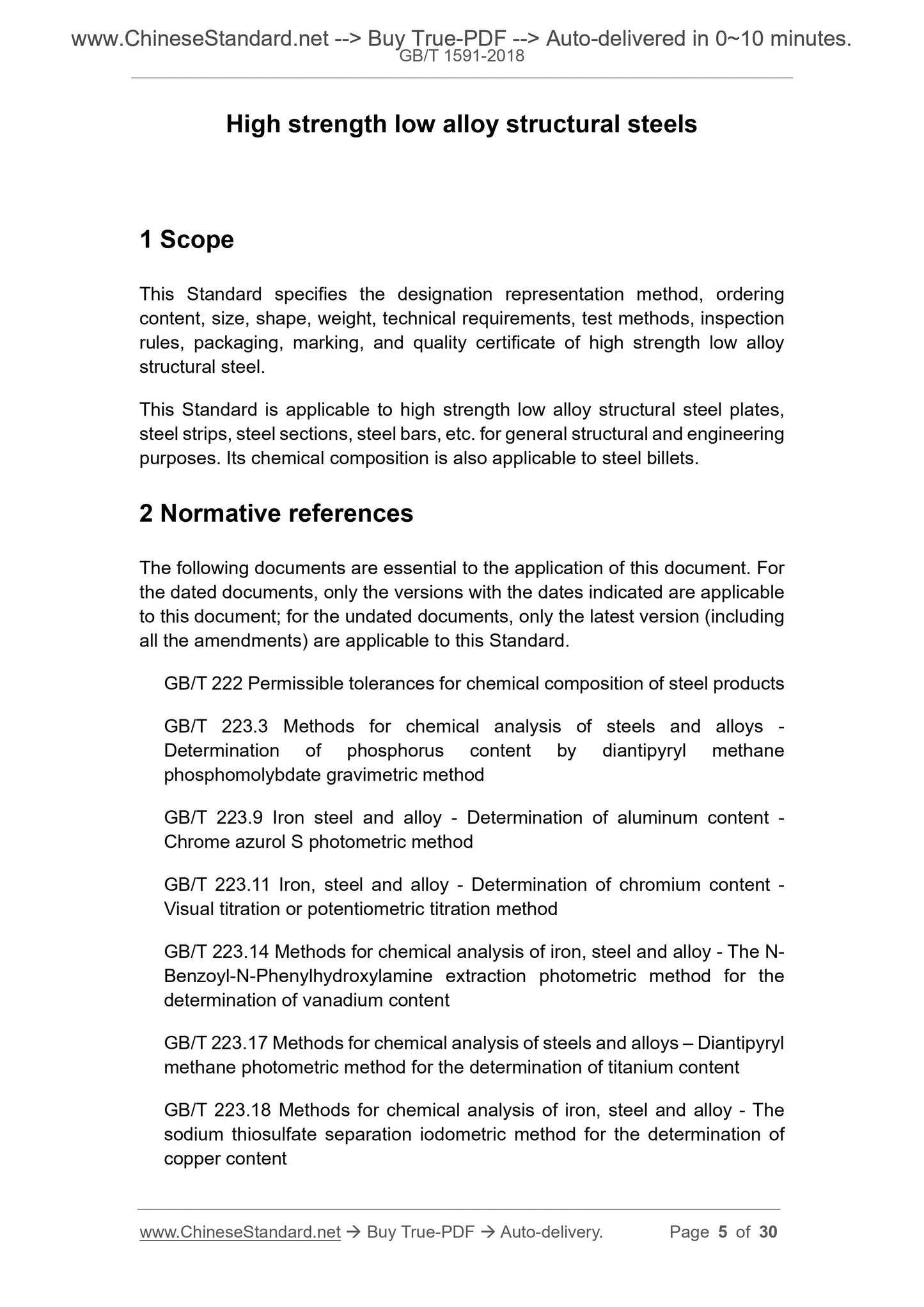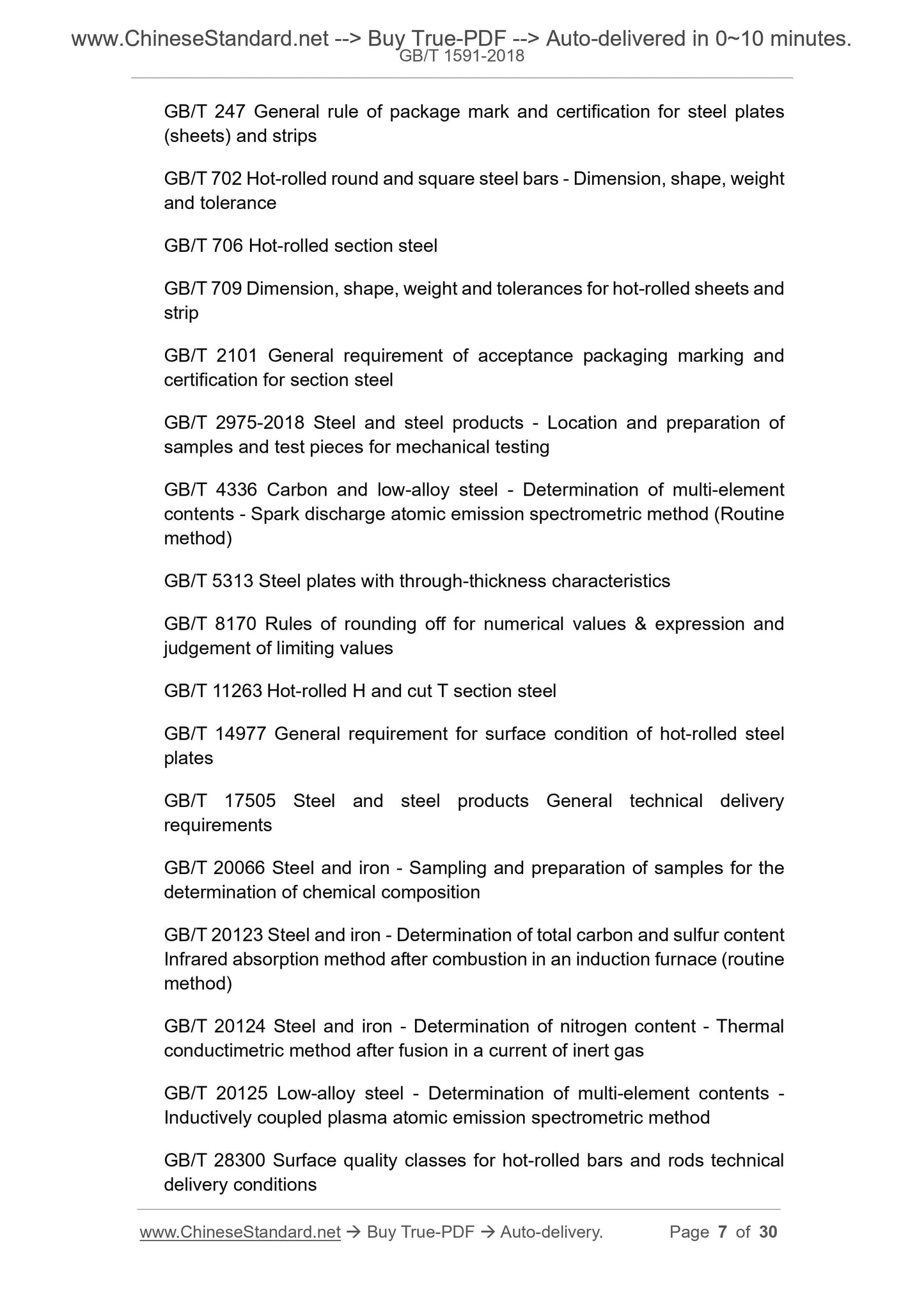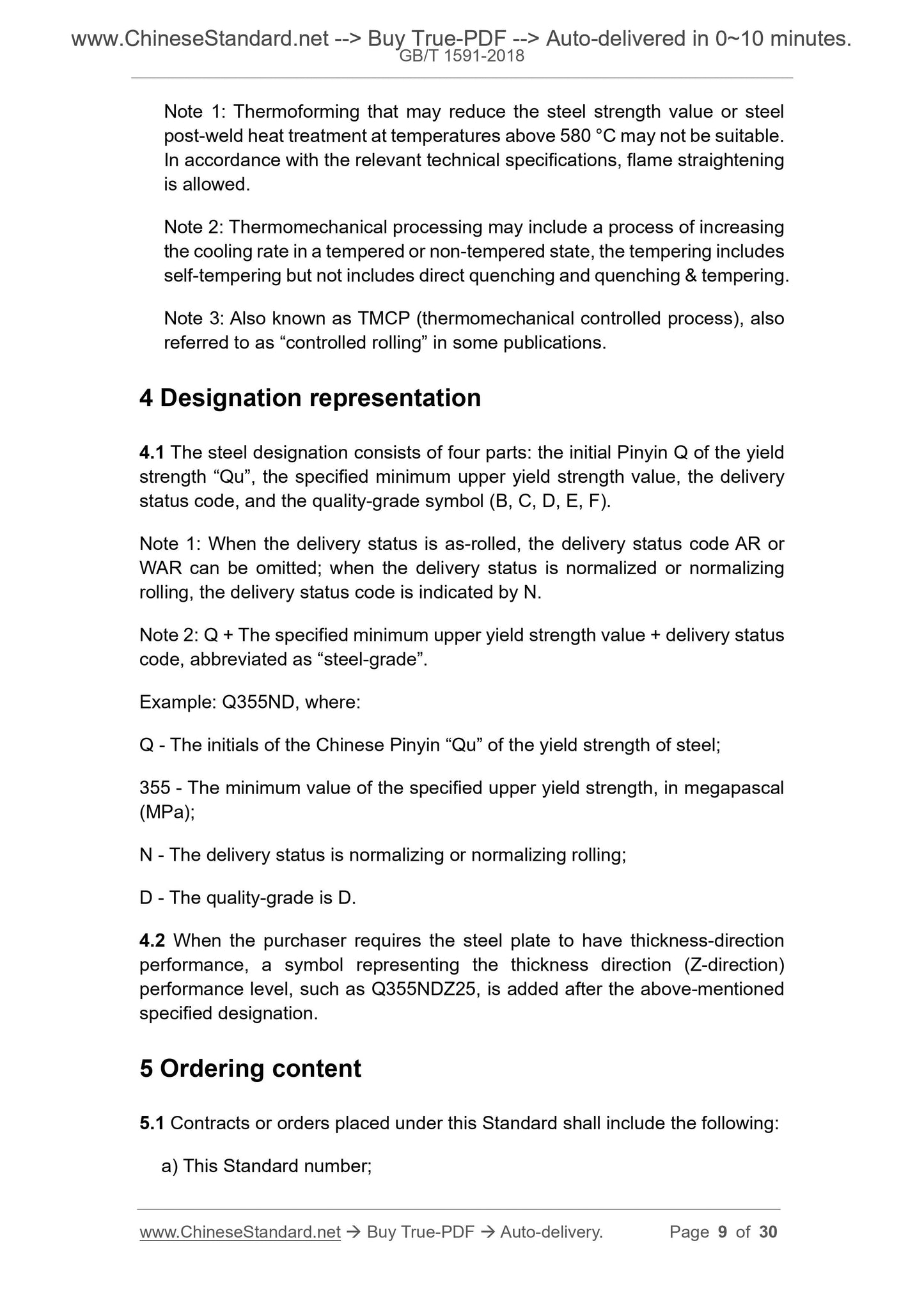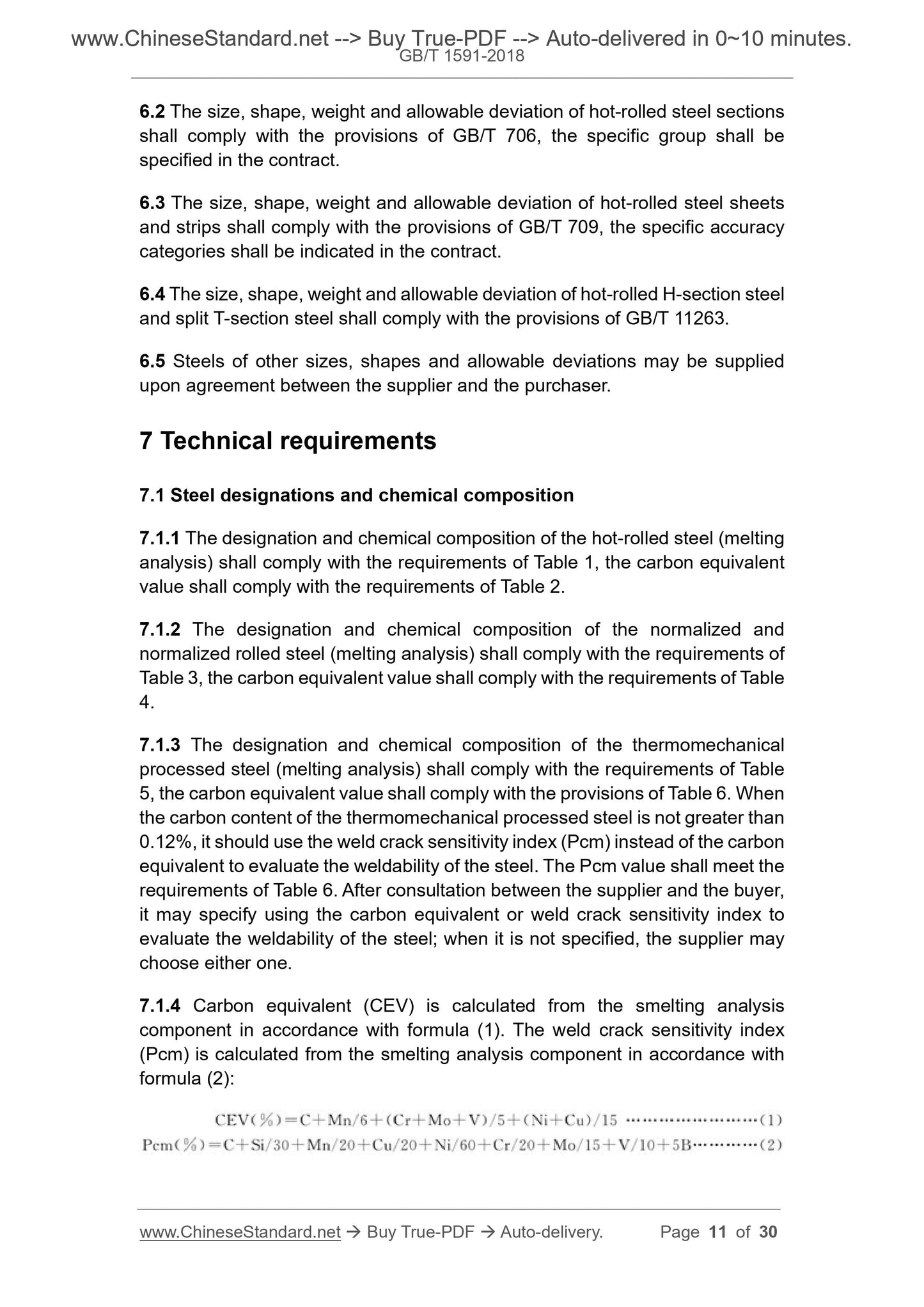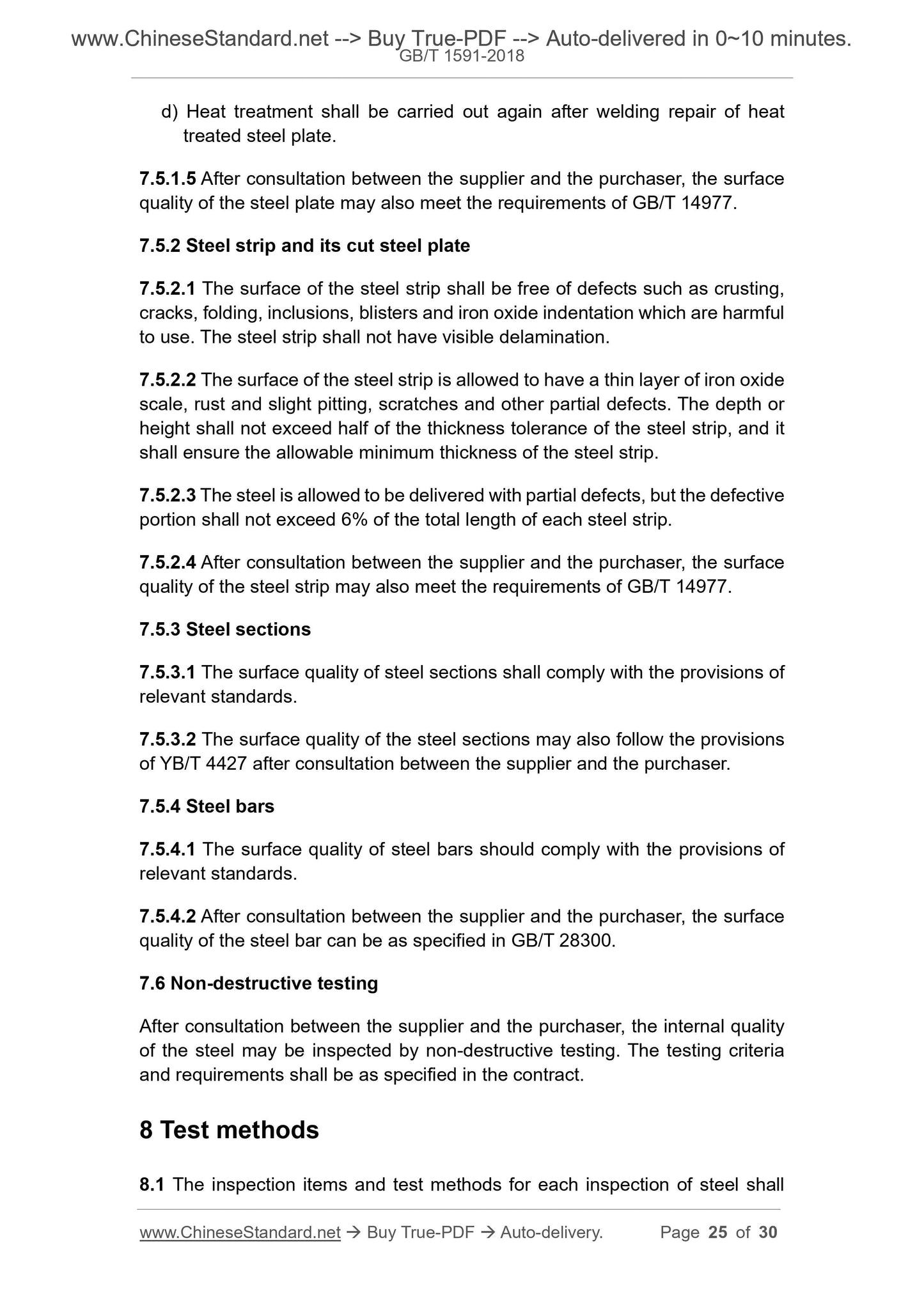1
/
of
8
www.ChineseStandard.us -- Field Test Asia Pte. Ltd.
GB/T 1591-2018 English PDF (GB/T1591-2018)
GB/T 1591-2018 English PDF (GB/T1591-2018)
Regular price
$125.00
Regular price
Sale price
$125.00
Unit price
/
per
Shipping calculated at checkout.
Couldn't load pickup availability
GB/T 1591-2018: High strength low alloy structural steels
Delivery: 9 seconds. Download (and Email) true-PDF + Invoice.Get Quotation: Click GB/T 1591-2018 (Self-service in 1-minute)
Newer / historical versions: GB/T 1591-2018
Preview True-PDF
Scope
This Standard specifies the designation representation method, orderingcontent, size, shape, weight, technical requirements, test methods, inspection
rules, packaging, marking, and quality certificate of high strength low alloy
structural steel.
This Standard is applicable to high strength low alloy structural steel plates,
steel strips, steel sections, steel bars, etc. for general structural and engineering
purposes. Its chemical composition is also applicable to steel billets.
Basic Data
| Standard ID | GB/T 1591-2018 (GB/T1591-2018) |
| Description (Translated English) | High strength low alloy structural steels |
| Sector / Industry | National Standard (Recommended) |
| Classification of Chinese Standard | H40 |
| Classification of International Standard | 77.140.01 |
| Word Count Estimation | 22,215 |
| Date of Issue | 2018-05-14 |
| Date of Implementation | 2019-02-01 |
| Older Standard (superseded by this standard) | GB/T 1591-2008 |
| Quoted Standard | GB/T 222; GB/T 223.3; GB/T 223.9; GB/T 223.11; GB/T 223.14; GB/T 223.17; GB/T 223.18; GB/T 223.23; GB/T 223.26; GB/T 223.37; GB/T 223.40; GB/T 223.60; GB/T 223.63; GB/T 223.68; GB/T 223.69; GB/T 223.76; GB/T 223.78; GB/T 223.79; GB/T 223.84; GB/T 228.1 |
| Regulation (derived from) | National Standards Announcement No. 6 of 2018 |
| Issuing agency(ies) | State Administration for Market Regulation, China National Standardization Administration |
| Summary | This standard specifies the grade designation, ordering content, size, shape, weight, technical requirements, test methods, inspection rules, packaging, marks, and quality certificates for low-alloy high-strength structural steels. This standard applies to general structural and engineering low-alloy high-strength structural steel plates, strips, profiles, steel rods and so on. Its chemical composition also applies to billets. |
Share

